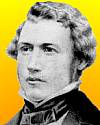
On 21 Apr 1830, James Starley was born, a British inventor and manufacturer known in his time as the father of the bicycle.
Though his name may now seem lost in the mists of time, his development of the bicycle as it is known today includes the tangent-tension spoke wheel that he originated in 1876.
In this article from the Wheel World magazine of 1881, the article on The Late Mr. James Starley recalls how his mechanical genius showed itself with varied inventions early in his life, and that it later extended not only to the designs for bicycle, tricycle and quadricycle, but also a major interest in sewing machine manufacturing.

On 21 Apr 1838, John Muir was born, the doyen of nature travel writings, whose descriptions of the high Sierra Sierra, the redwood forests and his trek through Florida to the Gulf of Mexico reveal a deep love of the magnificence of nature. Read any of his works, and the effect is the same: through his insight, you want to BE THERE yourself! Today's book pick is: John Muir: The Eight Wilderness Discovery Books, by John Muir, a compilation of eight of his most significant books of mountaineering and conservation literature. Among these pages you will be overcome by the awe and humility upon viewing towering Sequoia trees, feel the humidity of a Florida swamp and be engaged by the curiosity of a Douglas squirrel. As you read, you will be caught up in the wonder that all are still REAL today.
It is available from Amazon, typically about New from $40.00. Used from $9.37. (As of earlier time of writing - subject to change.)
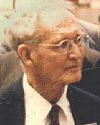 | By far the most important consequence of the conceptual revolution brought about in physics by relativity and quantum theory lies not in such details as that meter sticks shorten when they move or that simultaneous position and momentum have no meaning, but in the insight that we had not been using our minds properly and that it is important to find out how to do so. |
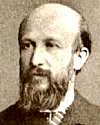 | The cell, this elementary keystone of living nature, is far from being a peculiar chemical giant molecule or even a living protein and as such is not likely to fall prey to the field of an advanced chemistry. The cell is itself an organism, constituted of many small units of life. |
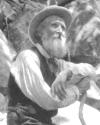 | Any fool can destroy trees. They cannot run away; and if they could, they would still be destroyed,—chased and hunted down as long as fun or a dollar could be got out of their bark hides, branching horns, or magnificent bole backbones. Few that fell trees plant them; nor would planting avail much towards getting back anything like the noble primeval forests. During a man’s life only saplings can be grown, in the place of the old trees—tens of centuries old—that have been destroyed. |
| Before you look at today's web page, see if you can answer some of these questions about the events that happened on this day. Some of the names are very familiar. Others will likely stump you. Tickle your curiosity with these questions, then check your answers on today's web page. | |
| Births | |
 | John Muir, born 21 Apr 1838 was a Scottish-American naturalist, farmer, explorer, writer and conservationist, who championed the establishment of national parks in California. He traveled widely, and wrote extensively, publishing 300 articles and 10 major books expounding his love of nature. Which two National Parks did he promote for California? |
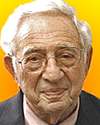 | Arthur William Galston was an American biologist, plant physiologist and bioethicist who studied herbicides. Others extended his work to manufacture a chemical defoliant used by the American military during the war in Vietnam. Killing the tree canopy leaves exposed Viet Cong positions when viewed from the air. Galston’s warnings of the chemical’s high toxicity to animal and human life had been ignored, as well as its potential to cause birth defects. Galston lobbied with other scientists against its use. Eventually Pres. Nixon ordered a halt to the extensive spraying of the chemical. What name was given to this chemical defoliant? |
| Deaths | |
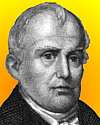 | Samuel Slater (1768-1835) was an English-American mechanical engineer who founded in America the industry in which he was apprenticed in England What industry did Slater establish in America? |
| Events | |
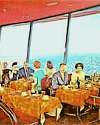 | On 21 Apr 1962, the first revolving restaurant in the U.S., was opened by remote control by President John F. Kennedy from Palm Beach, Florida. Where was this restaurant? |
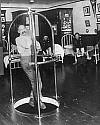 | On 21 Apr 1878, a New York City firehouse installed something, which was the first time it happened in the U.S. What was installed in the firehouse on this day? |
Fast answers for the previous newsletter for April 20: Stonehenge • many miles beyond the limits of existing glaciers, there were striations left in rock that were typical for glaciers • sugar-beet • (e) 8 tons • the decade including the year 1964 • pasteurization.
 If you enjoy this newsletter, the website, or wish to offer encouragement or ideas, please send feedback by using your mail reader Reply button.
If you enjoy this newsletter, the website, or wish to offer encouragement or ideas, please send feedback by using your mail reader Reply button. Your click on a Facebook, StumbleUpon, or other social button on the site webpages is also a welcome sign of appreciation. Thank you for using them.
© This newsletter is copyright 2020 by todayinsci.com. Please respect the Webmaster's wishes and do not put copies online of the Newsletter — or any Today in Science History webpage. (If you already have done so, please remove them. Thank you.) Offline use in education is encouraged such as a printout on a bulletin board, or projected for classroom viewing. Online, descriptive links to our pages are welcomed, as these will provide a reader with the most recent revisions, additions and/or corrections of a webpage. For any other copyright questions, please contact the Webmaster by using your mail reader Reply button.
--
If you do not want to receive any more newsletters, Unsubscribe
To update your preferences and to unsubscribe visit this link
Executive Real Estate Business Class
-
"It was like a man with wings. It wasn't like anything you'd see on TV or in a monster movie." ...
About the publisher
Search This Blog
Blog Archive
-
▼
2020
(1542)
-
▼
April
(134)
- ANIMALS: The rush to get a dog
- On This Day for April 30 - George Washington inaug...
- Medical Association Confirms Hydroxychloroquine 90...
- Newsletter for Thursday 30 April.
- April 30: Hitler Commits Suicide but What Happened...
- SCIENCE: The Spinosaurus is scarier than we thought
- Demystified: What’s the Difference Between a Bee a...
- On This Day for April 29 - British royal wedding, ...
- Breaking News and Historians in the News from HNN
- Is this Global Infection-induced Stealth Euthanasi...
- Newsletter for Wednesday 29 April.
- April 29: The Fall of Saigon and the Master of Fak...
- Family: 12 ideas to keep kids busy this week
- TRAVEL: Seeing from afar—the best photography books
- On This Day for April 28 - Benito Mussolini execut...
- Where did those 1600 Nazi Doctors go that were bro...
- Where did those 1600 Nazi Doctors go that were bro...
- Newsletter for Tuesday 28 April.
- April 28: James Cook Lands at Botany Bay, Mutiny o...
- HISTORY: Battling a pandemic so women could vote
- On This Day for April 27 - Independence for Sierra...
- New Op Eds This Week on History News Network
- NY Policy Results in Widespread Nursing Home Elder...
- Newsletter for Monday 27 April.
- April 27: Spanish Settle in the Philippines, Labor...
- SPECIAL: Family guide: Keeping your kids moving!
- The Last Kingdom | Historical quiz questions | Rom...
- On This Day for April 26 - Chernobyl nuclear accid...
- Data tells a drastically different story than what...
- Newsletter for Sunday 26 April.
- April 26: The Great Debate, Chernobyl and Oscar Wi...
- On This Day for April 25 - Hubble Space Telescope ...
- Save your life by using a mask correctly - Can pro...
- Newsletter for Saturday 25 April.
- CORONAVIRUS SPECIAL EDITION: What you need to know...
- April 25: The Guillotine, DNA and the 1st Solar Ba...
- PHOTOGRAPHY: Honoring those who help us every day
- How A Devastating Plague May Have Hastened The Dem...
- On This Day for April 24 - Installation of Pope Be...
- This Week's Roundup Top Ten from History News Network
- Newsletter for Friday 24 April.
- COVID 19 Research, the Nuremberg Code for research...
- April 24: War! What is it Good For?
- YOUR WEEKLY ESCAPE: The secrets hidden in a 500-ye...
- Truth Needs a Champion. Is It You?
- ANIMALS: More cats with the coronavirus. Should I ...
- On This Day for April 23 - Voting for Eritrea's in...
- Newsletter for Thursday 23 April.
- April 23: Defeat of the Vikings, Robert E. Lee and...
- SCIENCE: Beyond Greta: Who’s fighting for the Eart...
- Earth Day Special Edition: Today, let the planet i...
- Demystified Video: What's Inside the Great Pyramid?
- On This Day for April 22 - First Earth Day, Miguel...
- Breaking News from History News Network
- What do you think so far?
- Newsletter for Wednesday 22 April.
- April 22: Portugal Claims Brazil, Barbara Walters ...
- TRAVEL: Marooned at sea, 95,000 people
- On This Day for April 21 - French elections held, ...
- Newsletter for Tuesday 21 April.
- Your support empowers our scientists, explorers an...
- April 21: Babur Establishes the Mughal Empire, Tir...
- The step-by-step plan we are experiencing is expla...
- HISTORY: When George Washington was an epidemic fi...
- On This Day for April 20 - Explosion on the Deepwa...
- This Week's New Op-Eds on History News Network
- Corrected Link: Globalist Plan Rolling Out now cre...
- Globalist Plan Rolling Out now creating global pol...
- Newsletter for Monday 20 April.
- April 20: Pasteurization, Marie Curie Isolates Rad...
- SPECIAL: Coronavirus family guide: 'Back' to school
- VE Day at 75 | The scandalous lives of the Byrons
- On This Day for April 19 - American Revolution beg...
- Newsletter for Sunday 19 April.
- April 19: The 'Shot Heard Round the World' and How...
- Family: It's almost Earth Day! Create your own saf...
- The Compass: Earth Day 50th anniversary edition
- On This Day for April 18 - The midnight ride of Pa...
- Major Media (Fox included) Lies for the Deep State...
- Newsletter for Saturday 18 April.
- Our award-winning storytelling goes further.
- April 18: The 'Regulars are Coming!' and the Life ...
- CORONAVIRUS SPECIAL EDITION: People are having biz...
- PHOTOGRAPHY: On the ground in Nairobi as COVID-19 ...
- On This Day for April 17 - Canada Act proclaimed, ...
- The Roundup Top Ten from History News Network!
- Newsletter for Friday 17 April.
- April 17: The Bay of Pigs Invasion and the Boxing ...
- YOUR WEEKLY ESCAPE: Majestic photos of the tallest...
- Free Download: Britannica's Chrome Extension
- ANIMALS: The quarantine lifeline of a dog (or cat)
- On This Day for April 16 - Harriet Quimby's flight...
- Newsletter for Thursday 16 April.
- April 16: Madame Tussaud's Bloody Background
- SCIENCE: Ways to see what the world could be
- Discover Ancient Sparta with National Geographic H...
- Demystified: Can Eating Too Many Carrots Make Your...
- On This Day for April 15 - Sinking of the Titanic,...
- Breaking News from HNN
- Newsletter for Wednesday 15 April.
-
▼
April
(134)
-
Blogroll
-
About
HistoryFact










0 comments:
Post a Comment